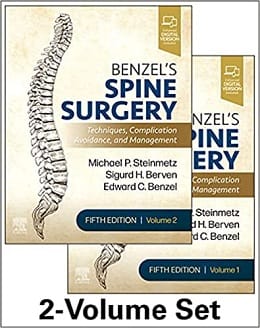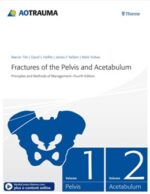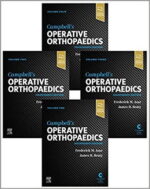Written and edited by world-renowned experts in the field, Benzel’s Spine Surgery: Techniques, Complication Avoidance and Management, 5th Edition, provides expert, step-by-step guidance on the evaluation and management of disorders of the spine. This definitive, two-volume work explores the full spectrum of techniques used in spine surgery, giving you the tools you need to hone your skills and increase your knowledge in this challenging area. Clearly organized and extensively revised throughout, it features contributions from both neurosurgeons and orthopaedic surgeons to present a truly comprehensive approach to spine disease.
- Offers a thorough overview of the effective management of patients with spinal disorders, including fundamental principles, biomechanics, applied anatomy, instrumentation, pathophysiology of spinal disorders, surgical techniques, motion preservation strategies, non-surgical management, and complication avoidance and management, as well as controversies.
- Focuses on both pathophysiology and surgical treatment of spine disease, with an increased emphasis on minimally invasive surgery.
- Contains new features such as key points boxes at the beginning of chapters and algorithms to help streamline the decision making process.
- Covers today’s hot topics in spine surgery, such as health economics, artificial intelligence, predictive analytics, new less invasive techniques including endoscopic spine surgery, and the future of spine surgery.
- Provides expert coverage of key topics including biomechanics of motion preservation techniques, spinal injuries in sports, biologics in spine fusion surgery, anterior sub-axial cervical fixation and fusion techniques, complex lumbosacropelvic fixation techniques, and many more.
- Features more than 1,500 high-quality illustrations, as well as new procedural videos on en bloc spondylectomy, minimally invasive endoscopic posterior cervical foraminotomy, cervical total disc replacement, minimally invasive lumbar decompression of stenosis, and more.








